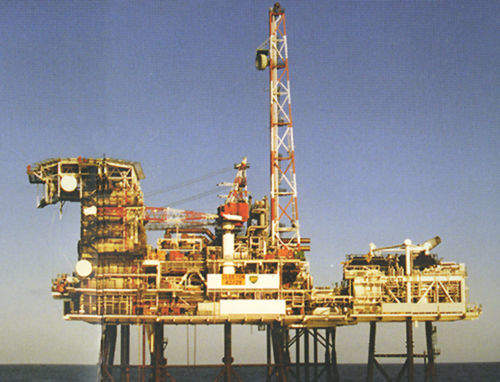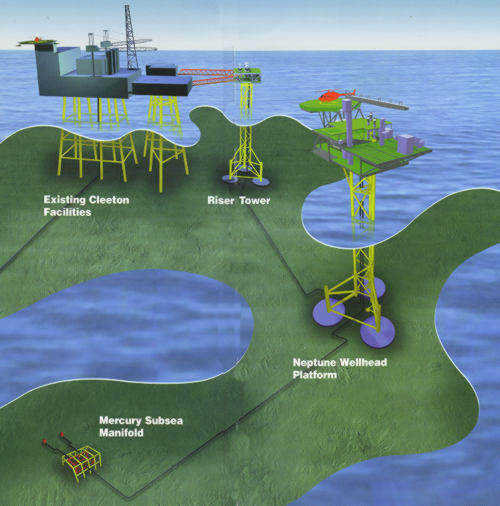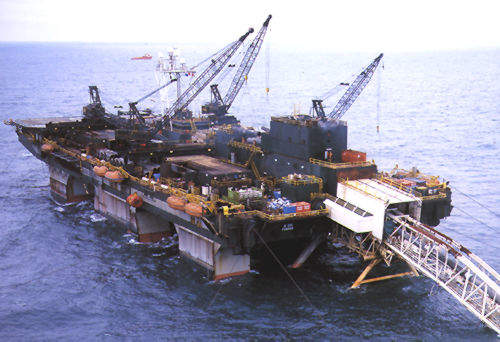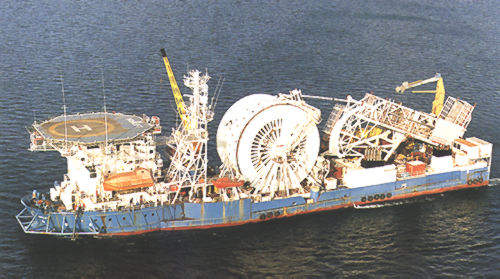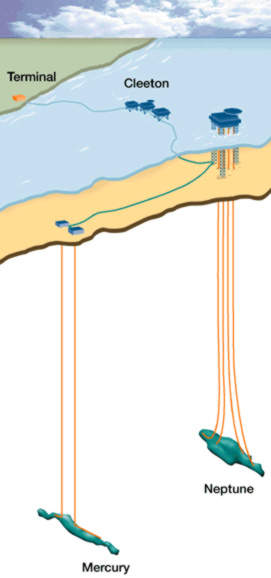The Easington Catchment Area (ECA) gas development was awarded DTI approval in November 1998. The £150m first phase of the ECA will involve the development of the Neptune and Mercury gas fields.
Location
The fields lie between 25 and 30 miles off the Yorkshire coast. Mercury lies in block 47/9b, while Neptune straddles 47/4b and 47/5a. The fields lie in water depths ranging between 29m and 46m.
Discovery
The Neptune field was discovered by BP in 1985, while Mercury was discovered by British Gas in 1983.
Partners
The ECA partners are, for Neptune: BG Exploration and Production Limited (61%), BP (18%), Amerada Hess (21%); and for the Mercury Field: BG Exploration and Production Limited (73%) and Amerada Hess (27%).
BG-BP asset deal
During December 2008, BG Group announced the exchange of its equity interests in its North Sea production assets with subsidiaries of BP. After the deal, BG Group will operate the Everest, Lomond and Armada fields. In exchange, BG will transfer its interests in the southern North Sea, including the Easington catchment area, to BP. Completion is expected to take place in the second half of 2009, subject to government, regulatory and third party approvals.
Drilling
Neptune will be developed using three new wells and an existing well by two producers. Drilling will be carried out using the drilling rig Glomar Adriatic XI. Global Marine Integrated Services (GMIS) and Expro Group Integrated Services will provide well design, planning and operational services.
Development strategy
Development of the fields was through a minimal, normally unmanned platform on Neptune and a subsea production facility on Mercury. These were tied back to BP’s existing Cleeton platform on 42/29 by a riser tower. A £24m contract for the engineering, procurement, fabrication, installation and commissioning of the Neptune platform and ECA riser tower was awarded to Brown and Root. The platform-and-riser tower was constructed at the company’s yard at Ardersier, Scotland.
The Neptune platform consists of a 630t jacket, held in place by 415t piles, supporting a 681t deck. The riser tower consists of a 560 308t piles, supporting a 714t deck.
Modifications to the Cleeton facilities allowing for the introduction of ECA gas were undertaken by BP and AMEC.
Water
The development scenario was selected due to the expected low level of water produced with the gas on Mercury. This meant that there was no need for water separation before the wellstream reached Cleeton. Using a subsea installation has the benefit of reducing any interference with other activities in the area, such as shipping. However, Neptune will need a platform so that higher levels of water coming out with the gas can be processed. The small, unmanned platform will house the control equipment for both fields.
Installation
Production commenced in late 1999. By adopting a ‘fast-track’ approach through performing development studies and conceptual engineering in-parallel with commercial negotiations, the ECA partners have reduced the time from the DTI sanction to first production to less than a year.
Export pipelines
Gas from Mercury flows to the Neptune platform via a 32cm (10in) diameter, 26km-long carbon steel pipeline, which is buried in a trench beneath the surface of the seabed. From there, the gas travels with the gas from Neptune through a 40cm (16in) 6.4km-long trenched pipeline, to the new riser tower alongside BP’s Cleeton facilities. A contract for the pipelines and subsea facilities, valued at around £23m, was awarded to ETPM UK.
The MSV Norlift laid the 10in line between the Neptune and Mercury fields, while the Laybarge LB 200 laid the line between Neptune and Cleeton.
Corrosion inhibitor and methanol are injected into the gas during production. Approximately 98% of the methanol is recycled in order to prevent the formation of hydrate crystals that can block pipelines.
When offshore processing is completed, the gas will flow via BP’s existing 90cm pipeline to its terminal at Dimlington, where final processing will take place.

